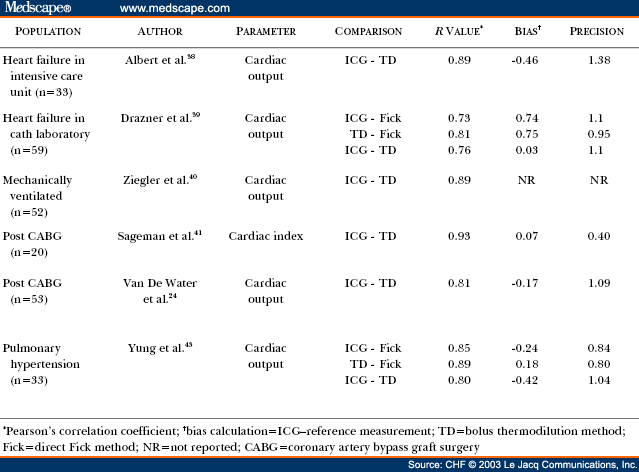Impedance Cardiography: Method
Given the importance of hemodynamic considerations in heart failure treatment, impedance cardiography (ICG) is a technology that permits economical, noninvasive monitoring of hemodynamic parameters in either a hospital or an outpatient setting. ICG, based on Ohm's law, applies a constant, low-amplitude, high-frequency, alternating electrical current to the thorax and measures the corresponding voltage to detect changes in thoracic impedance. Four dual sensors are placed on either side of the neck and thorax. The outer sensors transmit the alternating electrical current, and the inner sensors determine the thoracic impedance. There are two primary components of impedance: 1) base impedance, which depends on thoracic blood and plasma volume, chest skeletal muscle, cardiac muscle, lung tissue, chest wall fat, and air; and 2) dynamic impedance, which is caused by changing blood volume and velocity in the thoracic aorta (Figure 2). Biological tissues such as muscle, bone, fat, blood, and plasma all have different electrical properties. Of these tissues, blood is the most electrically conductive. Since arterial blood flow is pulsatile and arterial vessel walls are compliant, pulsatile changes in blood volume occur in the thoracic arterial system, predominantly in the aorta, as a result of ventricular function. This change in blood volume results in a change in the electrical conductivity and thus the impedance of the thorax to electrical current. It is the measured, dynamic, beat-to-beat changes in impedance that are processed and applied to an algorithm to calculate stroke volume and cardiac output. Direct and derived variables measured by ICG such as systemic vascular resistance, acceleration index, and thoracic fluid content are shown in Table 3 and Table 4 , respectively.
Changes in aortic volume correspond to changes in dynamic impedance
Thoracic fluid content (TFC) is represented as the inverse of baseline impedance. As conductivity in the chest increases (impedance decreases), TFC will increase. Since baseline impedance is dependent on the total thoracic tissue content, TFC is dependent on the total thoracic tissue content. Because fluid (both intra-and extravascular) is the most conductive and variable component of thoracic tissue, changes in TFC primarily occur because of changes in fluid.[12] As fluid increases in the chest, TFC increases. As fluid decreases in the chest, TFC decreases. Therefore, it is clinically important to establish a baseline TFC for each individual patient. Intrapatient directional changes in TFC will be indicative of directional changes in thoracic fluid.[13,14]
CHF. 2003;9(5) © 2003 Le Jacq Communications, Inc.
Cite this: Noninvasive Hemodynamic Monitoring in Heart Failure: Utilization of Impedance Cardiography - Medscape - Sep 01, 2003.











